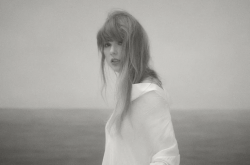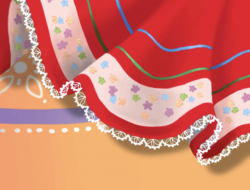At first, the road sign seems rather ordinary. Bold, green and functional, it could have been plucked from any interstate highway. Yet contradicting its mundane appearance is its content: “Little Saigon: Next Right.”
The sign marks the entrance to the Vietnamese-American Heritage Project at the Smithsonian, an exhibit commemorating the 30th anniversary of Vietnamese mass migration to the United States. The real focus of the exhibit is Vietnamese-Americans today; after all, the sign refers to Westminster, CA, a part of which was renamed “Little Saigon” for its large Vietnamese-American population.
“It’s no longer about the Vietnam War,” Ban Tran, the outreach coordinator of the Vietnamese-American Heritage Project, said, “but about the accomplishments the Vietnamese-American community has achieved and the challenges it has faced.”
The exhibit first looks at war refugees. A series of enlarged photographs trace their journey to the United States, depicting some who evacuated Vietnam on airplanes and many others who crowded treacherously onto a single boat. A mounted inflatable “life vest”—a circular tube about two or three feet in diameter, just big enough to keep your head above the water—reinforces that many staked their lives on the flimsy vessels, and their only options were to succeed in the escape or die.
Through family keepsakes, movie posters, restaurant menus, newspaper clippings, documentary video and other media, the exhibit illustrates that Vietnamese refugees not only survived, but also influenced mainstream American culture. Restaurant entrepreneurs—like the owners of Pho 75 in Arlington—added to America’s growing list of favorite ethnic foods by introducing Americans to pho, the Vietnamese broth. Vietnamese author Le Ly Hayslip wrote the novel upon which the Vietnam War film Heaven & Earth was based.
In a section on prominent Vietnamese in America, Georgetown Law Professor Viet Dinh, who drafted the USA Patriot act as Assistant Attorney general in the Bush administration, is featured alongside Betty Nguyen of CNN and Dat Nguyen of the Dallas Cowboys.
The broad picture the exhibit paints of Vietnamese-American culture includes both the positive and negative aspects of immigrant life. In one photograph, a young man’s face is obscured by a bandana as he makes the signature hand gesture of his gang—all you can see are his eyes, gleaming and dark in their defiance. Also, for perhaps the first time, photographs and newspaper articles tell the stories of Vietnamese-American victims of Hurricane Katrina. Surrounded by the remains of their homes, they face the daunting task of moving once more.
At times, the exhibit’s broad aim to cover Vietnamese-American contributions in nearly all aspects of American society leaves you wishing it had a more in-depth view. Its importance, though, is no less diminished. In a city where the only other prominent space related to the Vietnamese is the Vietnam War Memorial, an exhibit in the Smithsonian represents to many—especially to the 43,709 Vietnamese-Americans in the greater D.C. area—that they are here to stay.
“A lot of Vietnamese-Americans recognized the importance of leaving a legacy, to donate to honor our parents,” Tran adds. “It’s pretty powerful to leave for the next generation.”
“Exit Saigon, Enter Little Saigon” is at the S. Dillon Ripley Center, International Gallery, 1100 Jefferson Drive S.W. (between the Freer & Sackler Galleries and the Smithsonian Castle). It runs until March 31.




